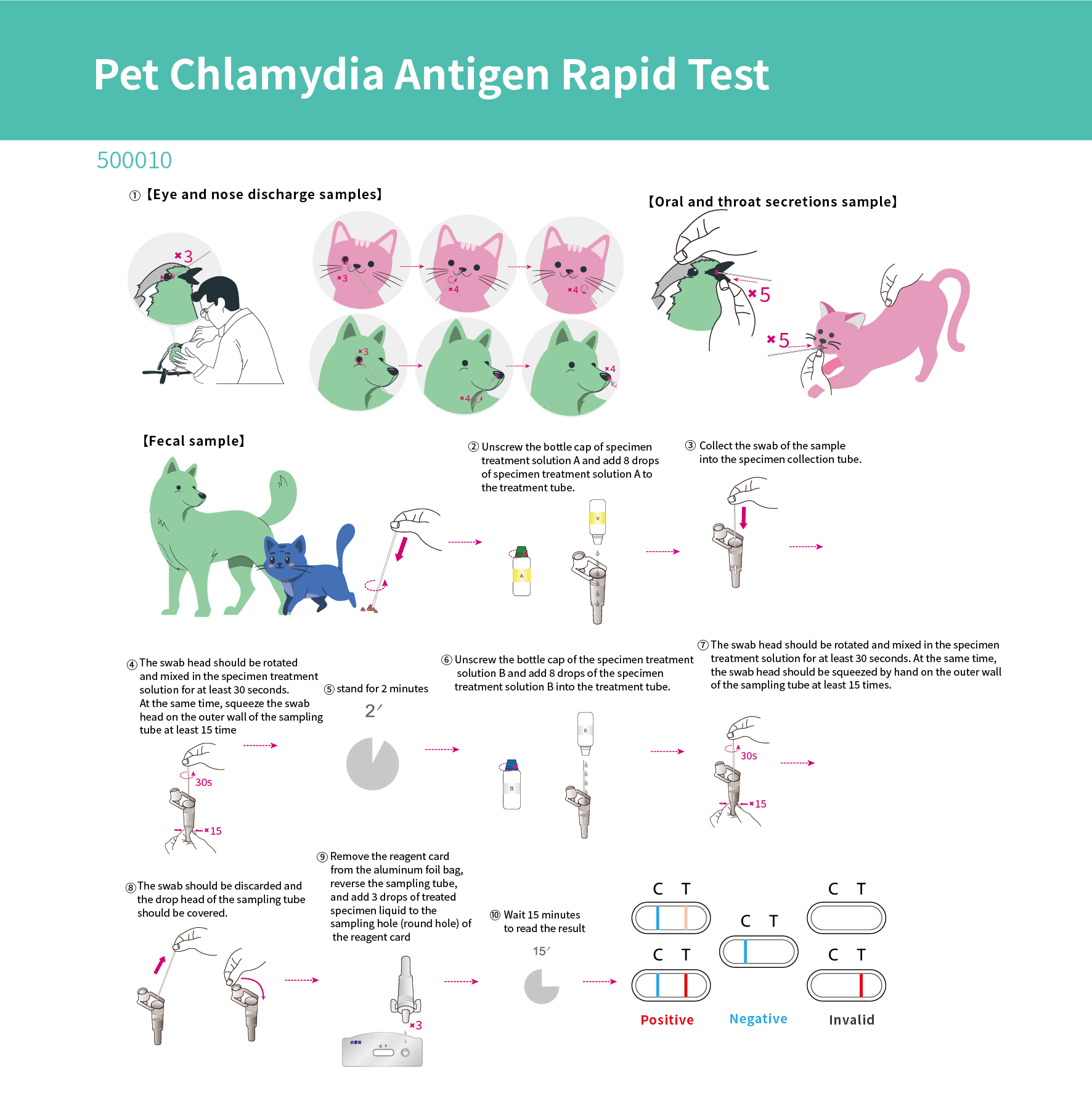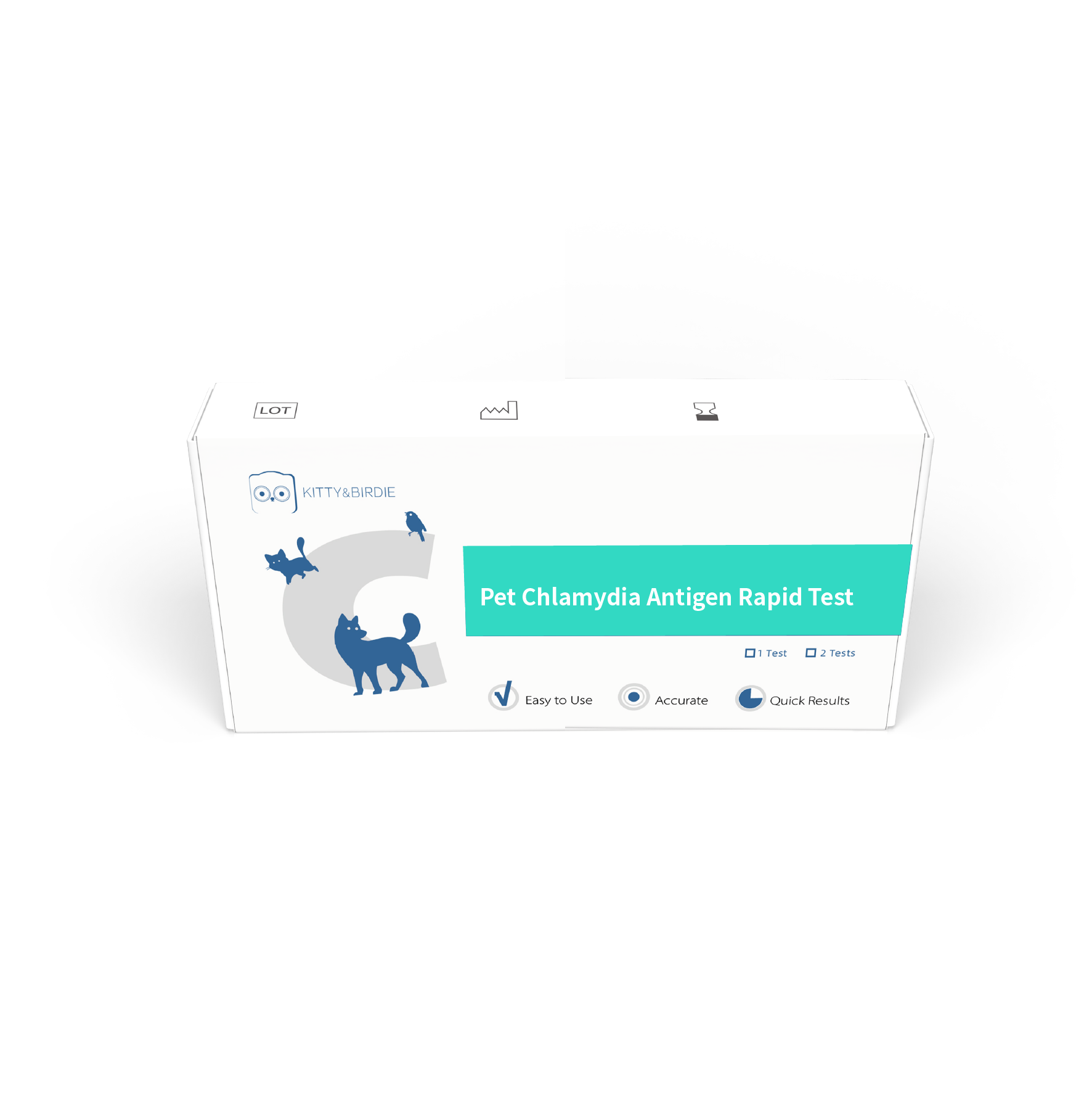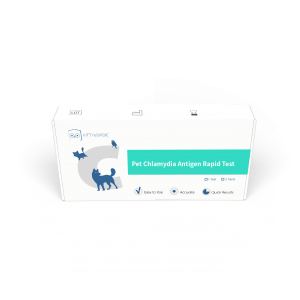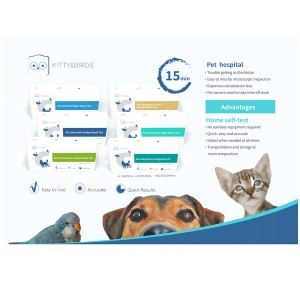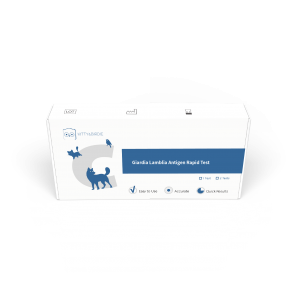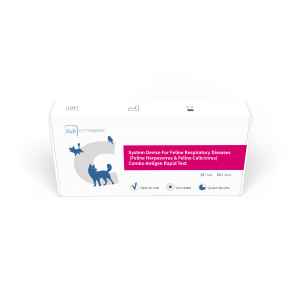Pet chlamydia Antigen Rapid Test
This product is used for rapid screening of bird, cat and dog samples for the presence of pet chlamydial antigens, and can be used as an aid in the diagnosis of psittacosis in birds and conjunctivitis or respiratory disease in cats and dogs.
Among pets, the common chlamydiae are Chlamydia feline and Chlamydia psittaci. Chlamydia psittaciens infects birds, but it also infects mammals such as cats and dogs, and can cause pneumonia in cats. Both Chlamydia feline and Chlamydia psittaci can cause acute or chronic conjunctivitis, rhinitis and bronchitis in cats. Chlamydia feline mainly infects stray cats and domesticated cats, but can also infect humans and dogs.
Chlamydia psittaci is mainly infected and transmitted between birds such as parrots, pigeons, chickens and ducks, and the feces, blood or feathers of infected birds may carry the pathogen. Birds infected with Chlamydia psittaci are often characterized by loss of appetite, red and swollen eyes, conjunctivitis, respiratory distress, diarrhea, and unformed feces. When diarrhea is present its feces are like water, green, gray, black and other colors, and you can also see that its feathers are often covered with feces. At the same time there will be breathing difficulties, breathing becomes louder, and even a cackling sound, but the sound is very weak. Birds suffering from psittacosis will often be seen squatting, with increased secretions from the eyes and nose, and their spirits are getting worse, with no appetite or even refusal to eat. Human infection of birds with Chlamydia psittaci may cause atypical pneumonia or life-threatening acute illness. Infected people are mainly groups that have more contact with birds, such as bird keepers, poultry farmers and veterinarians. The main route of infection is inhalation of aerosols containing the pathogen.
Feline chlamydia mainly infects stray cats and domesticated cats, but can also infect humans and dogs. The main symptoms of feline chlamydia virus infection are conjunctivitis, etc. Initially, one side of the eye is abnormal (squinting, tearing, redness and swelling of the conjunctiva), and then the other side of the eye gradually develops the same symptom in 5-7 days, and in the later stage, the ocular secretion will change from watery to mucous, and at the same time, there will be tearing, clouding of the eyes, eyelid spasms, congestion of the conjunctiva, inflammation/hemorrhage of the retina, coughing, runny nose, low-grade fever, enlarged lymph nodes, lack of appetite, and increased nasal increased secretions, and other symptoms.
The current diagnosis of Chlamydia in pets is mainly made by PCR methodology, which detects the DNA signal of Chlamydia in samples to confirm the diagnosis, but this methodology requires specialized technicians and equipment, and the testing time is long and costly. In contrast, the use of latex immunochromatography to detect chlamydial antigens in samples can rapidly screen for suspected pet chlamydial infections, and is simple and low-cost.
